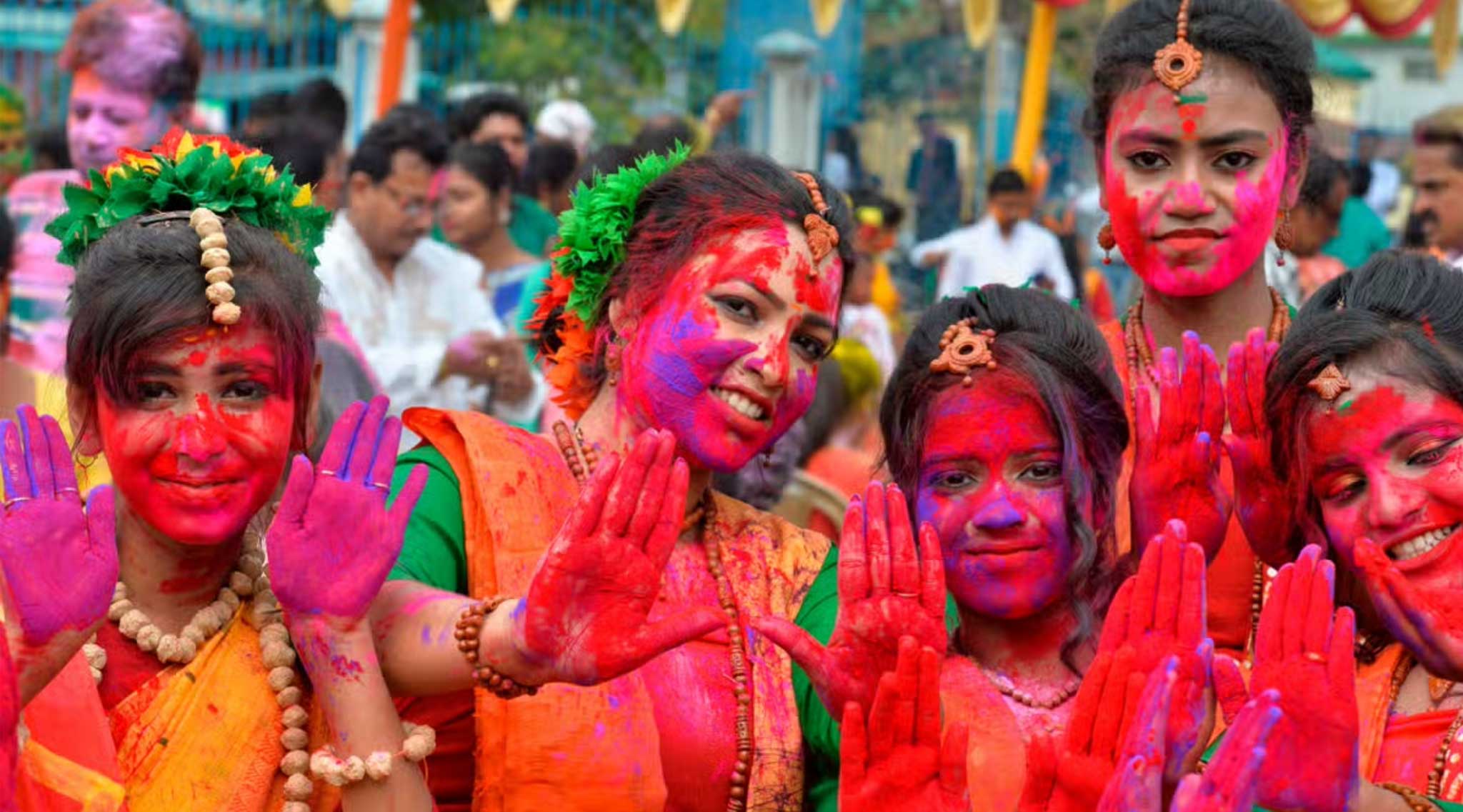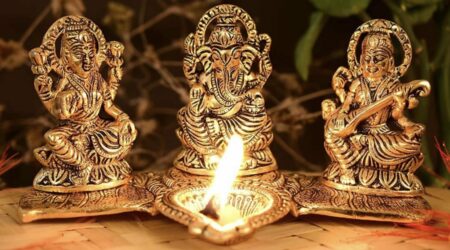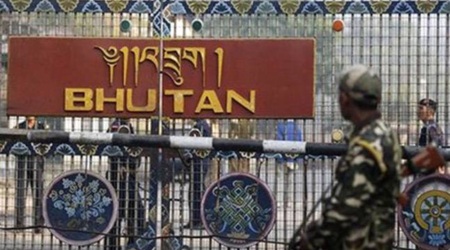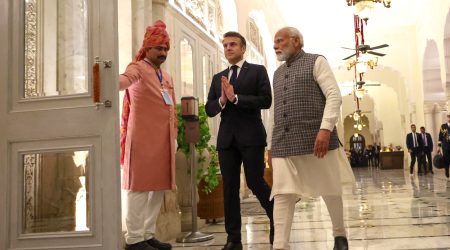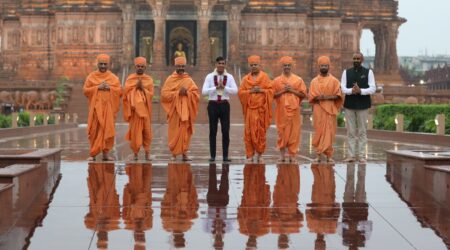Dr Kirti Shekhawat
In a civilizational state, where everything is woven into a mosaic, where everything blends and co-exists: be it language, music, dialect, attire or festivals, the creation of a model of multilingualism and multi-ethnicity, alignment is visible.
In this backdrop of diversity, the festival of Holi, is celebrated in South Asian countries especially in India and Nepal and now in various pockets of almost all countries. The array and blend of colors is a mirror of unity, celebrating universal brotherhood.
Holi was initially a festival celebrated by married women as they prayed for the happiness and well being of their families but with the passage of time it shifted towards merry making.
The festival of colors, originally called ‘Holika’ is celebrated on Phalgun Poornima – the Lunar full moon in the month of Phalgun of the Hindu calendar, every year.
The name changes with the location: Phagua in Bihar is all about food, fun and color; Dol Jatra or Basant Utsav, in West Bengal, Odisha and Assam is related to celebrating spring by taking out a palanquin procession of Radha Krishna; Shimga or Rang Panchami in Maharashtra, five days after Phalgun Poornima is celebrated with mouth watering delicacy, puran poli; Yosang in Manipur, where festivities continue for five-six days people dance ‘Thabal Chongba’ and pay tribute to Manipur God ‘Pakhangba’.
Boats are decorated to welcome spring in Goa and the Konkan coast during Shigmo and Ukkuli in the southern part of Konkan, traditional folk and street dances are performed. Manjal kuli in Gosripuram Thiruma’s Konkani temple in Kerala is celebrated with turmeric water. Meduru in Andhra Pradesh, Kama-dahana in Karnataka, Panguni-Uthiram or Kaman Pandigai in Tamil Nadu relate to Kama Dev’s story.
Holla Mohalla (Warrior Holi) in the Punjab showcases martial skills and mock sword fights highlighting the strength and courage of the participants. Kumaon Baithak Holi in Uttrakhand, Dhulandi in Haryana, Bhasma or Masan ki Holi in Varanasi, Ladoo and Lathmar Holi in Barsana and Nandgaon; Phulwari, Phool, Huranga in Vrindavan, Charimaar Holi in Gokul, Dhulandi or Charandi Holi in the rest of the country are the range of words associated with Holi that remind us that evil exists but can be overcome with the right attitude and courage and move towards selfless love.
The various names represent the multi-cultural character of Holi and the festival is associated with various myths and legends. The festival of colors is incomplete without understanding the significance of the colors associated with it.
Nature, in spring, spreads its arms all over the earth, spraying it with the color of flowers. Originally red color, made from the root of the madder plant, was used to play Holi, signifying love and passion followed by the fire of the forest flowers – ‘tesu’ soaked in water to make colored water. Yellow, a mixture of pomegranate peel and turmeric, was considered a color created by Lord Vishnu as he wove the rays of the sun to make a dress for himself and was a popular choice. The colors represent new life, vitality, harmony and balance.
Green represents nature, productivity and happiness, blue a symbol of spirituality, indigo the vastness of the universe and the boundless potential of mankind and Kumkum, the scarlet color, a blend of turmeric and lime, a symbol of new beginnings, warmth of human relations and bonds.
In Varanasi, the locals play Holi with the ashes from the crematorium. Folklore associates this with Lord Shiva bringing his wife Parvati, to Kashi or Varanasi after her Gauna – a tradition of bringing home the bride after she attains puberty-usually associated with child marriage, on Rangbhari Ekadashi. Lord Shiva, his followers and devotees expressed their happiness by covering themselves in the pyre ashes. Bhasam or Masan-ki-Holi represents victory over the fear of death, and is considered a path to moksha or salvation. Lord Vishnu too is worshiped.
Another popular story is associated with the burning of Kama Dev, the God of Love. Lord Shiva’s wife Sati immolated herself and was reborn as Parvati who for years tried to gain the attention of Lord Shiva.
When all efforts failed, she was helped by Kama Dev, the God of Love who succeeded in distracting Lord Shiva, deep in meditation. Distracted, Lord Shiva set him ablaze. Rati, the wife of Kama Dev, meditated for forty days after which Kama Dev was brought back to life by Lord Shiva. The day of his rebirth is celebrated as Holi. In Tamil Nadu, turmeric water is used instead of colors to bring respite to the burns of KamaDev, celebrating love.
A day before Holi, Holika Dahan or Chhoti Holi is celebrated. Some believe that the term Holika was derived from ‘Holka,’ a Sanskrit word meaning ‘parched grain’ which was offered in the hawan and the sacred ashes – Bhumi Hari Vibhuti was smeared on those who participated, to ward away the evil eye.
To represent this, a bonfire is made of dried wood, leaves, twigs, debris with a log in the center representing Holika, tied around with thread and worshiped by women in traditional attire with offerings like cow dung cakes, mustard and sesame seeds and oil, sugar, sweets, batasha, wheat grains, rice, coconut, flowers, jaggery, turmeric, whole moong, gulal, etc. Irrespective of caste, creed, age, gender, religion, social hierarchy, everyone in the vicinity of the bonfire, gather and circumvent the holy fire after sunset, singing songs and hymns, letting go of their sadness, social code and toxicity, welcoming happiness and prosperity.
The burning of the effigy of Holika symbolizes the removal of all negativity.
Fresh barley and green chana (chickpeas) seeds are roasted in the flames and enjoyed, a thanksgiving gesture for a good harvest. The direction of the flames is gauged to predict the next harvest season. The heat of the bonfire also signifies the end of winter and the beginning of summer. Ashes from the bonfire are taken and placed near the front door to protect the residents from diseases and bring good luck and prosperity to the household.
The festive mood is carried forward as groups of revelers sing and dance to Chap and Dhap (folk instrumental music) all night. In Rajasthan, Chang or Dhuff dance is named after the instrument Chang, used for the dance to the tune of folk songs called Dhamaal. Men dress up as women and dance to humour songs, converting an otherwise ordinary night into a lively one. Beginning from Maha Shivratri, each night echoes the songs and musical instruments and this ritual continues till Dhulandi. The voice of the singers blend with the silence of the desert nights, in total harmony with nature, soothing the listener.
The washing away of colors signifies commitment to life, cleansing the mind of all evil and demonic thoughts, embracing and forgiving every fellow being, forming a union and welcoming a new colorful, vibrant future as colorful as HOLI.

Dr Kirti Shekhawat has been a life-long academician, educationist and teacher before she turned a short story writer after her superannuation as principal.
Disclaimer: The views expressed are not necessarily those of The South Asian Times


